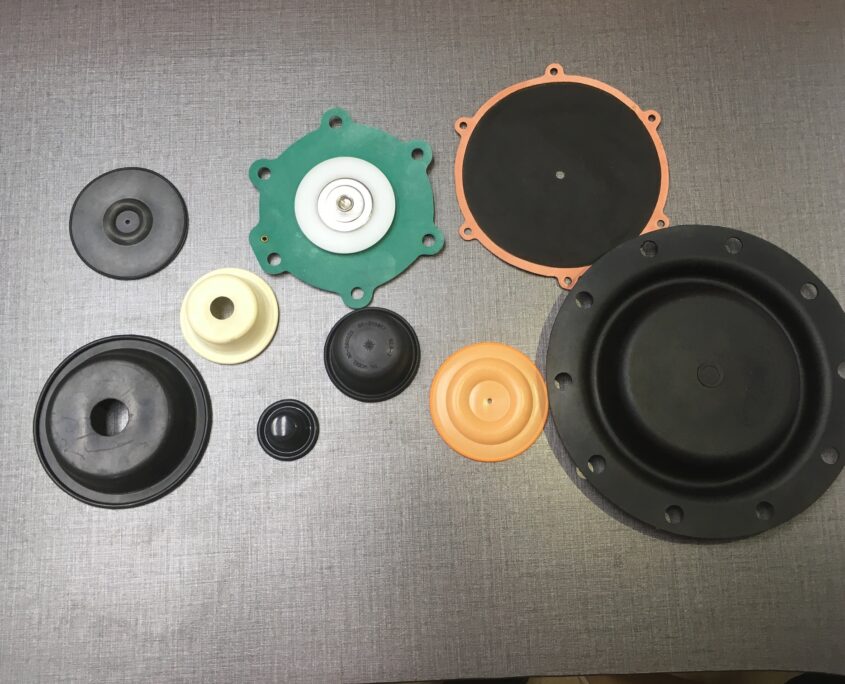What is the function and principle of the EGR valve diaphragm?
The EGR (exhaust gas recirculation) valve diaphragm is a key component of the EGR system in internal combustion engines. Its functions and principles are as follows:
Function:
The main function of the EGR diaphragm is to control the flow of exhaust gas from the exhaust manifold into the intake manifold. This recycling of exhaust gas reduces the formation of harmful nitrogen oxide (NOx) emissions by lowering the combustion temperature. The diaphragm and EGR valve together regulate this process by opening and closing the valve to control the amount of recycled exhaust gas.
Principle:
Pressure difference: The EGR system operates based on the pressure difference between the exhaust system and the intake manifold. When the engine is running, a vacuum is generated in the intake manifold. The diaphragm responds to vacuum by bending or moving, which is activated by the EGR valve controlling the solenoid valve or the engine computer (ECU).
EGR valve movement: When the it moves in response to vacuum, it opens the EGR valve. This operation allows a controlled amount of exhaust gas to flow into the intake manifold, where it mixes with the incoming air and fuel.
Reduce NOx emissions: The recycled exhaust gas contains inert gases that can absorb some heat during the combustion process. This reduces the temperature in the combustion chamber, thereby reducing the formation of NOx emissions, which are the main factors causing air pollution.
Closed position: When the engine is running under conditions that do not require EGR (such as during cold starts or full throttle periods), it closes the valve to prevent exhaust gas recirculation.

Common EGR valve diaphragm problems and troubleshooting methods
If there is a problem with the EGR valve diaphragm, it may cause malfunctions in the vehicle’s engine performance and emission control. Here are some common problems and troubleshooting methods:
EGR valve stuck open or closed:
Problem: Due to carbon deposition or mechanical issues, the EGR diaphragm may be stuck in the open or closed position.
Troubleshooting: First, check and clean the EGR valve and oil duct for carbon buildup. If this does not solve the problem, you may need to replace the EGR valve.
EGR valve leakage or tearing:
Problem: Over time, the diaphragm may leak or tear, leading to improper operation of the EGR valve.
Troubleshooting: Check the diaphragm for any visible damage or leakage. If the diaphragm is damaged, it should be replaced. If the valve is old or worn, please consider replacing the entire EGR valve.
EGR valve stuck:
Problem: The diaphragm may become stuck, preventing the EGR valve from opening or closing properly.
Troubleshooting: Try gently tapping the EGR valve while the engine is running to see if it is released. If not, it may be necessary to replace the diaphragm or the entire EGR valve.
EGR valve control issue:
Problem: Sometimes, the problem is not with the diaphragm itself, but with the control circuit, such as the EGR valve controlling the solenoid valve or the engine computer (ECU).
Troubleshooting: Check the electrical connections, wires, and vacuum hoses related to the EGR valve. Test the EGR valve control solenoid valve to ensure that the ECU is working properly.
EGR valve not responding:
Problem: The EGR valve may not respond to changes in engine conditions, resulting in improper emission control.
Troubleshooting: Check the vacuum lines to ensure they are connected correctly and not damaged. Test the response of the EGR valve to vacuum changes and check for vacuum leaks.
Poor performance of EGR valve:
Problem: If the diaphragm operates but the performance of the EGR valve is not ideal, it may lead to a decrease in fuel efficiency and an increase in emissions.
Troubleshooting: Thoroughly clean the EGR valve and channel to remove carbon deposits. Ensure that the EGR valve is working properly and consider conducting a professional inspection if necessary.

